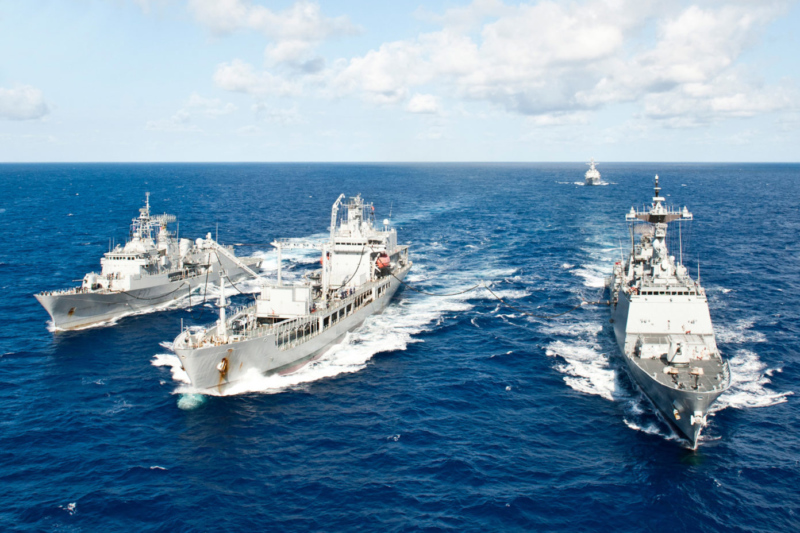The Politics Of Disaster Relief
After a 7.0 magnitude earthquake struck Haiti, the aftershock reached China in ways that few anticipated.The earthquake forced Chinese leaders to navigate the tricky politics of disaster relief.
On September 14, 2022, the Inter-American Dialogue and the Chile Pacific Foundation co-hosted a webinar titled “Competing Visions for Economic & Security Partnership in the Pacific—What Role for LAC?” This event considered the wide range of economic and security arrangements emerging across the Pacific and potential implications for countries in the Latin American and Caribbean (LAC) region. The event featured commentary from Ambassador Juan Gabriel Valdés, Chilean Ambassador to the United States and former Foreign Minister of Chile; Ryan Hass, senior fellow at the Brookings Institution; Paulina Nazal Aranda, director of ProAmérica; and Adrian Hearn, professor of Latin American Studies at the University of Melbourne.
Valdés opened the event with an overview of existing dynamics surrounding the triangular relationship between the United States, China, and Latin America. Amid growing US-China competition, an increasing number of Latin American countries are adopting a foreign policy of strategic non-alignment, he said, because Latin American countries, such as Chile, are now reliant on both China and the United States. China is Chile’s number one trading partner, and the United States is Chile’s top source of investment. Being forced to pick sides is not in Latin America’s strategic interest. Additionally, as Valdés noted, Latin American countries do not view the Belt and Road Initiative (BRI), Xi Jinping’s signature foreign policy initiative, or the new Global Development Initiative with the same levels of apprehension as the United States.
While the Biden administration has pledged to underscore hemispheric relations, these promises are so far viewed as more "hollow than substantive," Valdés noted. The United States has instead directed its efforts toward the Indo-Pacific and related regional groupings, such as the Quad and AUKUS. A sharp increase in realistic dialogues with the United States, that promote shared values, will be of critical importance if the United States is serious about engaging more extensively with the LAC region. The Americas Partnership for Economic Prosperity, announced at this year’s Summit of the Americas, was a good start, he suggested, but needs to be supported by substantive policy proposals and goals that address structural deficits in the region.
Valdés ended with a recommendation for US officials and policymakers, which was later reiterated by the rest of the panelists. To ensure growth in US-LAC economic and security cooperation, Washington must focus more attention on what is required in the hemisphere, and less on what is feared by the United States.
Hass followed with in-depth analysis of developments in the US-China relationship and their implications for engagement with the Indo-Pacific region. Whether in the Asia Pacific region or elsewhere, China’s foreign policy has grown increasingly ambitious, he added. China is focused on positioning itself as the leader of the developing world. Hass explains that China has been able to accomplish this by gradually and deliberately shifting its trade flows towards developing countries, decreasing dependence on the Global North, and investing in the development of wide-ranging partnerships with developing nations.
Nazal Aranda offered a comprehensive overview of the existing economic and security arrangements in the Indo-Pacific, including the Regional Comprehensive Economic Partnership (RCEP) and the Comprehensive and Progressive Agreement for Trans-Pacific Partnership (CPTPP), and provided an explanation for the current economic success in the Asia Pacific. The RCEP and CPTPP will have important significance for the future of global commerce, as the two economic arrangements currently account for 31 percent and 12 percent of global GDP, respectively. Furthermore, the RCEP accounts for 27 percent of global imports and 32 percent of global exports, while the CPTPP accounts for 14 percent of global imports and 16 percent of global exports.
China is increasingly dominating trade in Southeast Asia with the US lagging due to policies enacted during the Trump administration, including withdrawing from the Trans-Pacific Partnership, the predecessor to CPTPP, she said. Nazal Aranda also suggested the Biden administration is attempting to improve relations and engagement with the Asia Pacific region, as well as to counter Chinese influence through platforms such as the Indo-Pacific Economic Framework (IPEF). She noted that it is still too early to determine the IPEF’s impact and what the potential role for LAC countries could be. LAC nations aren't yet a part of the IPEF.
Lastly, Hearn outlined China’s unfolding engagement in the Pacific region, with reference to China's recent attempts to influence the Pacific Islands Forum. Hearn also addressed recent developments in BRI, noting that Chinese policymakers are placing a greater emphasis on developing a more sophisticated approach to achieving global infrastructure investment. Additionally, China has moved beyond establishing agreements at the national level, and is instead focusing on working with wide-ranging subnational actors to advance commercial and other objectives.
The panel ended with a Q&A session. Among other topics, participants focused on the future of the US-Chile and China-Chile relations, and considered how metals exporters, such as Chile, might aim to further diversify their trade with and avoid excessive dependence on China.
This event was hosted in partnership with the Chile Pacific Foundation.
 |
WATCH THE EVENT RECORDING HERE
After a 7.0 magnitude earthquake struck Haiti, the aftershock reached China in ways that few anticipated.The earthquake forced Chinese leaders to navigate the tricky politics of disaster relief.
2009 has not been a good year for U.S.-Latin America relations. Despite their warm welcome at the April Summit, Latin America’s governments made life more difficult than anticipated for President Obama.
What do the election results mean for hemispheric policy and foreign relations?
 Amanda McErlich | US Navy | CC0
Amanda McErlich | US Navy | CC0